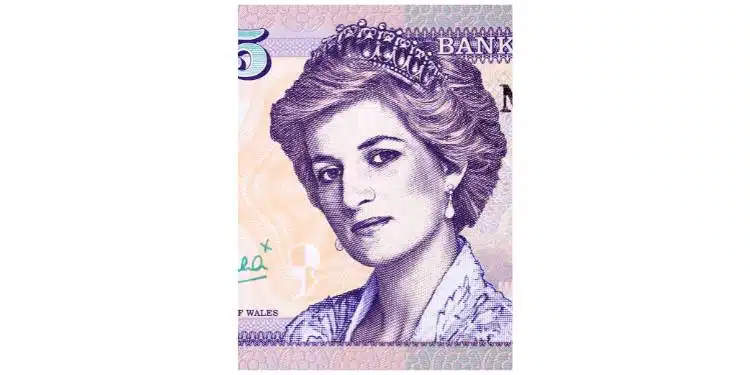by Wendy Holden
I Was a Teenager When Princess Diana Entered My Life
This is the story of my life with Princess Diana. It was early 1981 and she was all over the papers; the blonde who captured the heart of the dashing Prince of Wales. The girl who succeeded where everyone before her failed.
We were close in age; she was a mere four years older. Otherwise, there was a world of difference between us. She was an aristocrat who grew up on the Sandringham Estate and at Althorp, her ancestral home in Northamptonshire. I came from more humble circumstances. Nonetheless, I felt a kinship with her. Everyone did, which was why she was so popular.
My family were not royalists, but luckily my godmother was. I spent the day of the 1981 Royal Wedding glued to her TV in Huddersfield. We oohed and aahed at every detail, thrilling in the glamour and romance.
Diana Was the Happiest, Luckiest Girl in the World
Or so it seemed. In fact, the engagement was manipulated from start to finish and Diana had discovered she had a rival only just before going up the aisle. The rival, Camilla Parker Bowles, was actually in the cathedral, dressed in grey, watching Diana go by. But none of us – or very few of us – knew that then.
But I knew – or thought I knew – what happy and lucky looked like. It looked like Diana. I wanted to look like her too. I strained every sinew to imitate her, not easy in a West Yorkshire mill town. There was more scope when my sinew-straining (academic division) resulted in a place at Cambridge where Prince Edward, Charles’ brother, studied at the time. I used to see him in the university library, his already slightly balding head bent over his books, his detective at his side. But I never got to chat with him.
Diana Herself Swung Back into My Life During My First Job After Leaving University
I was with a small magazine aimed at foreign diplomats in London, a sort of Tatler for ambassadors. My main duty was to attend hundreds of parties, several a night, where eye-wateringly powerful drinks would be served. Well, someone had to do it and it was gratifying when this high-level diplomatic work was recognized with an invitation to a Buckingham Palace Garden party. The Queen and Prince Philip would be there, and Charles. And Diana.
I was thrilled at the prospect of seeing Diana in the flesh and I wanted to hear her speak too. But how was I to meet her? Cunningly (and with their permission), I positioned myself next to a row of Chelsea pensioners. As expected, she came up to chat. And so, for a few seconds, those huge blue eyes and that light, breathy voice were directed at me.
Our Paths Crossed Again Soon Afterwards
I had made friends with Lucia Flecha de Lima, the warm-hearted wife of the Brazilian ambassador who, it turned out, was almost a surrogate mother to Diana. She invited me to a party in her magnificent Mayfair house. Everyone pretended to carry on chatting when Diana entered in a beautiful close-fitting grey lace frock, but they were all staring like mad. I remember thinking that even at a private gathering she was gawked at, and how strange it must be.
I was firmly on the royal party circuit now. Not long after this, I found myself accidentally standing on the train of Princess Michael of Kent’s ballgown (she was very nice about it). But Diana was the one I most wanted to see. At the Christmas party of a national broadsheet, I got another chance. She appeared in a column dress, sparkling, smiling, glowing. It would have been as easy as anything to talk to her but all of us journalists hung back because the Princess of Wales was standing with the paper’s editor, of whom we were all terrified. The only people who went up to Diana that night were from the canteen and the postroom.
Princess Diana Remained on My Mind
In the newspaper magazine, I now worked on, I was always suggesting articles about her, possibly hoping to encounter her again. This led to some strange situations, such as when I found myself in San Lorenzo, a favorite Di lunch spot, with an American socialite whose party piece was to draw all over the tablecloths. Mara, the owner, and Diana’s close friend, was not impressed. Worse, I proudly told my section editor that I had once won a Blue Peter badge in a Royal Wedding plate design competition. It took him about three seconds to work out that I had been, at the time, a highly embarrassing sixteen.
And Then, Suddenly, Diana Was Dead
Bizarrely, the very morning it happened, my parents were on a rare visit to London. I had arranged a river trip and we chugged along, staring in disbelief at the half-mast flags on the bank. Afterward, we went to Kensington Palace where, at that stage, hardly any flowers had been laid and there were hardly any people. It was too early. The hysteria was yet to build up.
Workwise, I’d just joined Tatler, whose editor prided herself on being counterintuitive. As every other publication ran long, mourning pieces, she decided on a tribute to ‘Diana’s Famous Sense Of Humor’. Staff were ordered to track down the princess’s friends and acquaintances. This was how I found myself conducting lengthy interviews with the man who occupied the next treadmill at the Harbour Club and had examples of Diana’s surprisingly salty jokes.
It is Over a Quarter of a Century Since Princess Diana’s Death
A whole generation has grown up since that awful night in Paris, which makes Diana now part of the past. A historical figure who stands at a crossroads in history. At the time, Britain was changing bewilderingly fast, in every imaginable way. Yet those at the top of the social order failed to recognize this. They also failed to see that the child they shoehorned up the aisle wasn’t quite as docile as she looked that day my godmother and I watched, open-mouthed, from our Huddersfield sofa.
About the Author
 Wendy Holden, also known as Taylor Holden, is a bestselling novelist, journalist, and former war correspondent. Well-known for writing romance and general fiction stories, she penned more than 30 books in her career. Some of her most popular works include the novels of the Royal Outsiders series and the Laura Lake series. Wendy was born in Pinner, North London and now lives in Suffolk, England.[1] Holden authored ten Sunday Times top ten bestsellers and sold over three million copies worldwide to date. The Princess by Wendy Holden about her life with Princess Diana is to be released on August 17, 2023. Learn more about Wendy Holden HERE.
Wendy Holden, also known as Taylor Holden, is a bestselling novelist, journalist, and former war correspondent. Well-known for writing romance and general fiction stories, she penned more than 30 books in her career. Some of her most popular works include the novels of the Royal Outsiders series and the Laura Lake series. Wendy was born in Pinner, North London and now lives in Suffolk, England.[1] Holden authored ten Sunday Times top ten bestsellers and sold over three million copies worldwide to date. The Princess by Wendy Holden about her life with Princess Diana is to be released on August 17, 2023. Learn more about Wendy Holden HERE.
10 Little Known Facts About Princess Diana
Diana Spencer, also known as Princess Diana, was a prominent figure whose life and actions are widely covered in the media. However, there are some lesser-known or not widely publicized facts about her. Here are a few:
1. Childhood nickname
Diana was affectionately called “Duch” by her family and close friends during her childhood, short for Duchess, as it was believed she would one day marry into royalty.
2. Nanny’s influence
Diana’s childhood nanny, Mary Clarke, played a significant role in her upbringing and later in her life. Diana was deeply attached to her and invited her to attend her wedding to Prince Charles, showcasing the bond they shared.
3. Educational pursuits
Diana had a keen interest in children and education. After finishing her studies at a Swiss finishing school, she worked as a part-time nanny and preschool assistant before marrying Prince Charles.
4. Marriage age gap
Diana was notably younger than Prince Charles; she was only 20 years old when she got engaged to him, while he was 32 at the time.
5. Royal wedding cake
Diana and Charles’s wedding cake was a massive creation standing 5 feet tall and weighing 225 pounds. It was decorated with the Spencer family’s coat of arms, the Prince of Wales’s feathers, and edible flowers.
6. Music and dance
Diana loved music and dancing. She enjoyed pop music from the 1980s and was particularly fond of British singer George Michael. She attended numerous ballet and theater performances during her lifetime.
7. Hidden philanthropic visits
Before her divorce from Prince Charles, Diana made secret visits to hospitals, homeless shelters, and other charitable organizations to personally meet those in need and offer support. She preferred these visits to be low-profile to avoid media attention.
8. Fashion icon with a charitable twist
While she was celebrated as a fashion icon, Diana used her public appearances to bring attention to various charitable causes, including HIV/AIDS awareness, homelessness, and the campaign to ban landmines.
9. Vegetarianism
Diana adopted a vegetarian diet for a period during her life and even promoted healthier eating habits, which was somewhat uncommon among the royal family at the time.
10. Last resting place
Diana’s final resting place is an island on the Althorp Estate, her family’s ancestral home, where she was buried after her tragic death in 1997.
FAQs
Princess Diana, also known as the “People’s Princess,” captivated the world with her charisma, compassion, and philanthropy. Here are some frequently asked questions about her:
1. When was Princess Diana born?
Princess Diana was born on July 1, 1961, in Park House, Sandringham, Norfolk, England.
2. When did Princess Diana die?
Princess Diana tragically passed away on August 31, 1997, in a car crash in the Pont de l’Alma tunnel in Paris, France.
3. How did Princess Diana die?
Princess Diana died as a result of injuries sustained in a car crash. The vehicle she was in crashed while attempting to evade paparazzi photographers in Paris.
4. What was Princess Diana’s full name
Her full name was Diana Frances Spencer before her marriage to Prince Charles. After marriage, she became Diana, Princess of Wales.
5. What were Princess Diana’s major charitable causes?
Princess Diana was deeply involved in several charitable causes, including HIV/AIDS awareness, landmine removal, support for individuals affected by leprosy, and helping the homeless and vulnerable populations.
6. How many children did Princess Diana have?
Princess Diana had two sons: Prince William, born on June 21, 1982, and Prince Harry, born on September 15, 1984.
7. What were some of Princess Diana’s famous charitable works?
Princess Diana was known for her hands-on approach to charity work. She frequently visited hospitals, schools, and shelters, offering comfort and support to those in need. Her advocacy for HIV/AIDS patients and efforts to raise awareness about the disease were particularly noteworthy.
8. Was Princess Diana involved in any controversial issues?
Princess Diana was involved in various controversies throughout her life. Her marital struggles and divorce from Prince Charles were widely covered in the media. Additionally, her open discussions about her struggles with mental health and life inside the royal family sparked debates and discussions.
9. How did Princess Diana change the public’s perception of the British monarchy?
Princess Diana’s warmth, compassion, and approachability endeared her to the public and humanized the royal family, which was often seen as distant and formal. She brought a modern touch to the monarchy and was often referred to as the “People’s Princess.”
10. What is Princess Diana’s legacy?
Princess Diana’s legacy includes her extensive charitable work, her dedication to humanitarian causes, and her impact on mental health awareness. She remains an iconic figure who continues to inspire people worldwide through her compassion and charitable efforts.
Other Important Women in History From the 1980s
The 1980s saw the rise of several celebrated women who made significant contributions to various fields. Here are some notable women from that era:
Margaret Thatcher (1925-2013):
As the first female Prime Minister of the United Kingdom, Margaret Thatcher served from 1979 to 1990. Known as the “Iron Lady,” she implemented conservative economic policies and played a key role in shaping British politics during the 1980s.
Sally Ride (1951-2012):
In 1983, Sally Ride became the first American woman to travel to space as an astronaut on the Space Shuttle Challenger. She made history and inspired many women to pursue careers in science and space exploration.
Madonna:
The “Queen of Pop,” Madonna, rose to fame during the 1980s with hits like “Like a Virgin,” “Material Girl,” and “Like a Prayer.” Her impact on popular culture and music during the decade is considered groundbreaking.
Oprah Winfrey:
In the 1980s, Oprah Winfrey became the host of “The Oprah Winfrey Show,” a talk show that eventually became one of the highest-rated programs in television history. She used her platform to discuss a wide range of topics, championing literature, self-improvement, and inspiring millions of viewers.
Benazir Bhutto (1953-2007):
Benazir Bhutto became the first female Prime Minister of Pakistan in 1988 and served two non-consecutive terms in office. Her election as a female leader in a predominantly Muslim country was a historic milestone.
Whitney Houston (1963-2012):
During the 1980s, Whitney Houston achieved immense success as a singer and actress, becoming one of the best-selling music artists of all time. Her powerful voice and hits like “I Wanna Dance with Somebody” and “Greatest Love of All” made her an international superstar.
Sandra Day O’Connor (1930-2018):
In 1981, Sandra Day O’Connor was appointed by President Ronald Reagan as the first female Associate Justice of the U.S. Supreme Court. She served on the Court with distinction for nearly 25 years.
Indira Gandhi (1917-1984):
Although she served as Prime Minister of India before the 1980s, Indira Gandhi continued to be a prominent figure during this decade until her assassination in 1984. She was a significant political leader on the global stage.
These women, among many others, played crucial roles in shaping politics, entertainment, science, and culture during the 1980s and continue to be remembered for their enduring impact.










